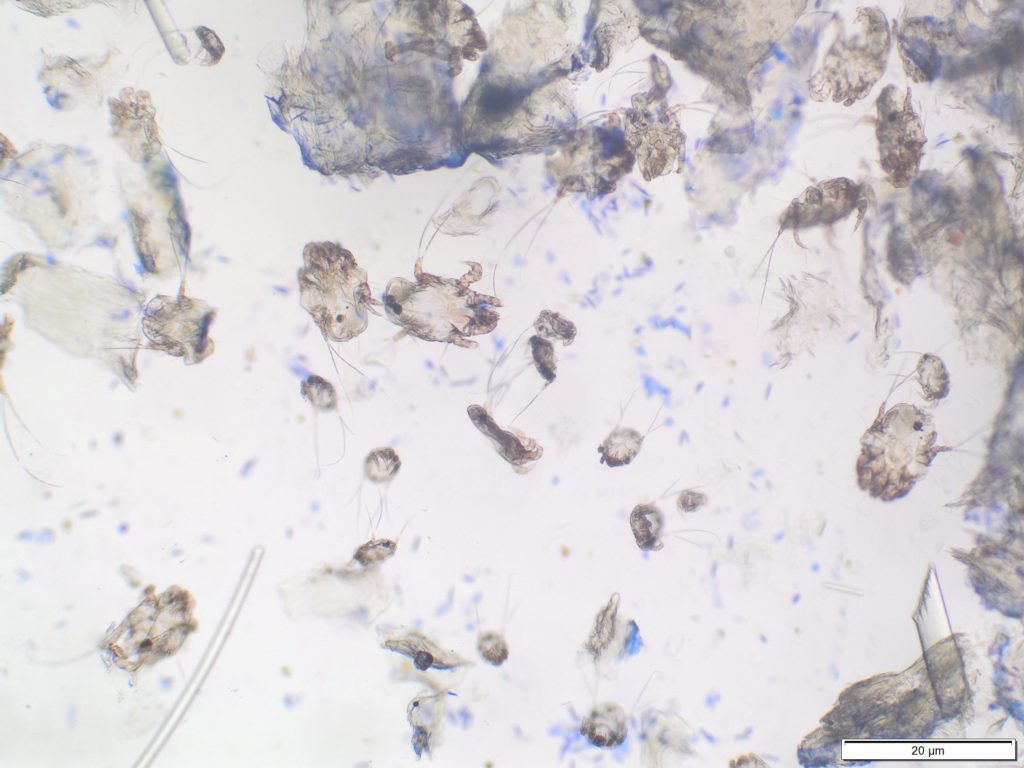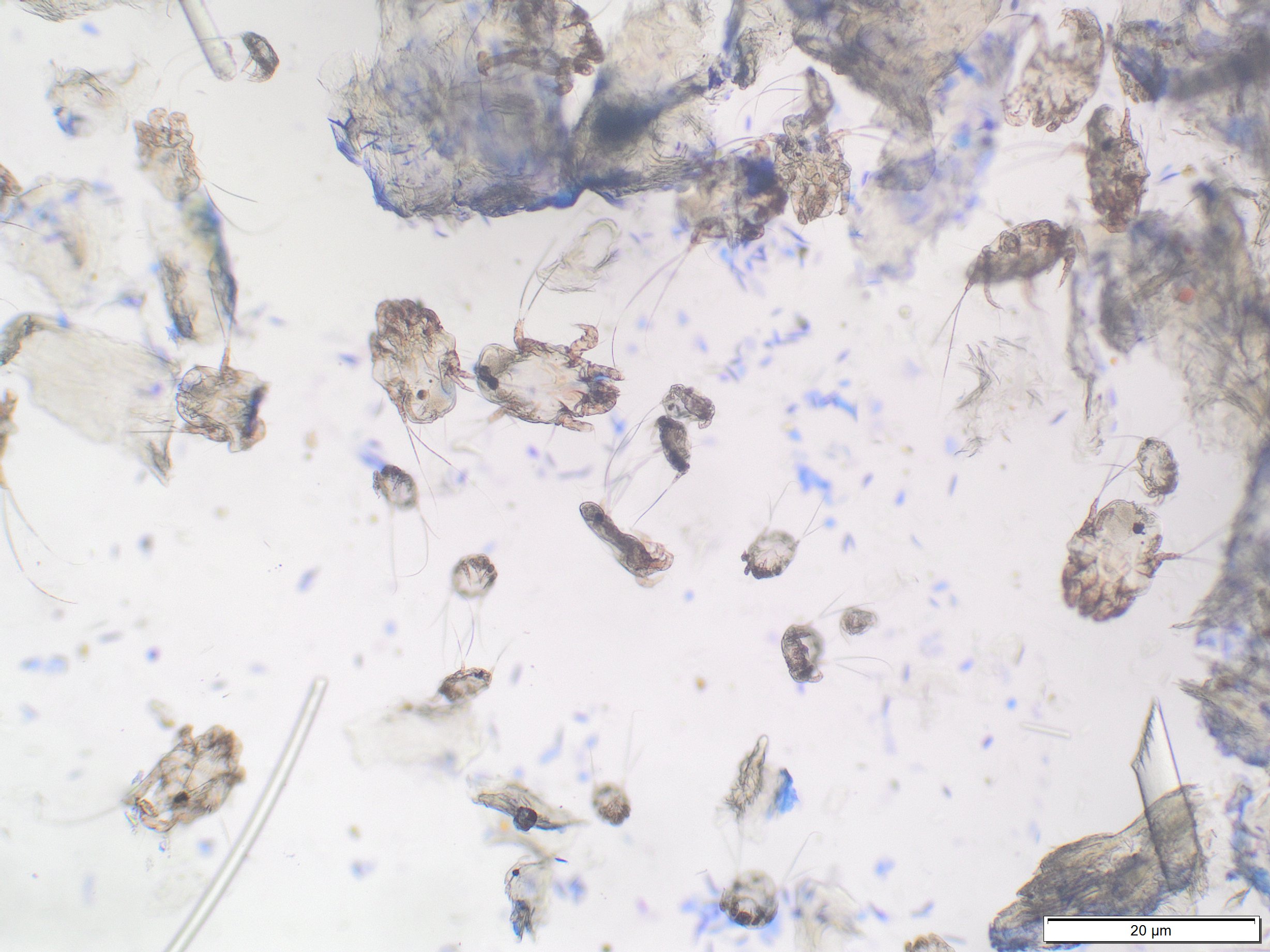REBECCA ALLAN
A recent case submitted to the Christchurch laboratory had us itching to reach a diagnosis.
Clinical history:
The patient was a 10-year-old Gypsy x Welsh Cob with longstanding inflammation of the pasterns. The veterinarian had taken skin scrapes and submitted smears to the laboratory for cytology.
Laboratory findings:
Examination of smears revealed a seething mass of mites in various stages of maturity (Figure 1.) Morphology of the mites were consistent with Chorioptes bovis, leading to a diagnosis of chorioptic mange. A video of the mites can be seen here.

Discussion:
This is the most common cause of mange in horses, occurring in all breeds, but with a predisposition in draught horses with feathered fetlocks. Infection with these chewing mites causes pruritic skin lesions resulting in papules, crusting and alopecia and secondary bacterial dermatitis in some cases. Mites can spread to stable and paddock mates, either directly or indirectly e.g. by shared use of grooming equipment.
Treatment recommendations include clipping of long hair, shampooing or scrubbing of affected skin and use of topical and injectable parasiticides. The horse in this case had a complete recovery following treatment with two doses of Dectomax® (doramectin).
Thank you to Becky Sutorius from Rangiora Equine Services for this submission and for clinical feedback on this case.

